wyssinstitute
Latest

Harvard and Sony built a tiny surgery robot inspired by origami
The mini-RCM is about the size of a tennis ball and weighs the same as a penny.
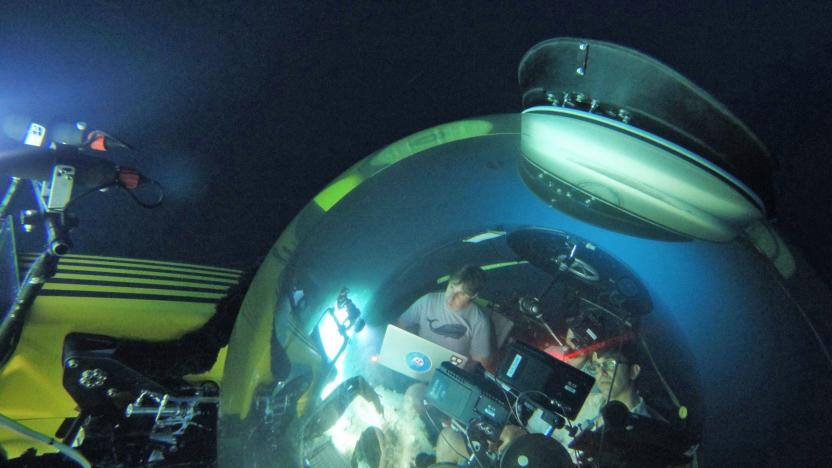
Glove-controlled robot arm is soft enough to pet jellyfish
Remote-controlled robot arms allow submersible operators to perform tasks underwater. But can you imagine a rigid metal limb interacting with something as fragile as jellyfish or corals? To be able to capture or interact with marine life, scientists need something softer that can touch delicate living things without squishing them to death. That's why a team of scientists from Harvard's Wyss Institute has developed a soft robotic arm that can "move with unprecedented dexterity to grasp and sample delicate aquatic life."
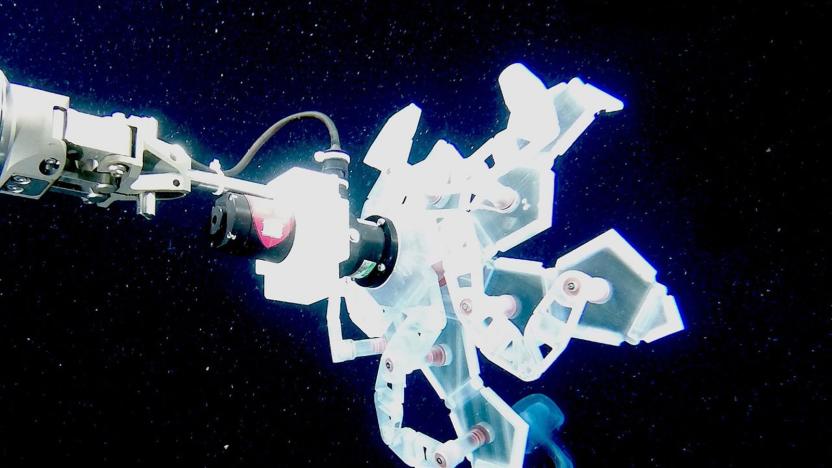
Harvard's robot arm can grab squishy sea animals without hurting them
As you might imagine, you can't just grab extra-soft sea creatures like jellyfish or octopuses when you want to study them. Not if you want them to remain intact, anyway. Thankfully, researchers at Harvard's Wyss Institute have a far more delicate solution. They've created a robot arm (the RAD sampler) whose petal-like fingers can quickly form a ball shape around an animal, capturing it without risking any harm. It's simpler than it looks -- it uses just a single motor to drive the entire jointed structure, so it's easy to control and easier still to repair if something breaks.

Science takes a step toward coding virus-resistant human cells
In 2016, scientists unveiled one of the most ambitious genetic engineering efforts yet: Genome Project-write wanted to do nothing less than create (not just edit) human cells immune to all known viruses. There was a rough start that included dramatic funding shortfalls, but it now looks like the initiative is getting underway in earnest. Harvard's Wyss Institute and French immunotherapy company Cellectis have formed a partnership that will see Cellectis supply genome engineering tools to a Wyss team led by George Church. They'll use custom enzymes to remove redundant codons (nucleotide "triplets" that produce amino acids for specific proteins) and prevent viruses with those codons from hijacking cells to produce copies of themselves.
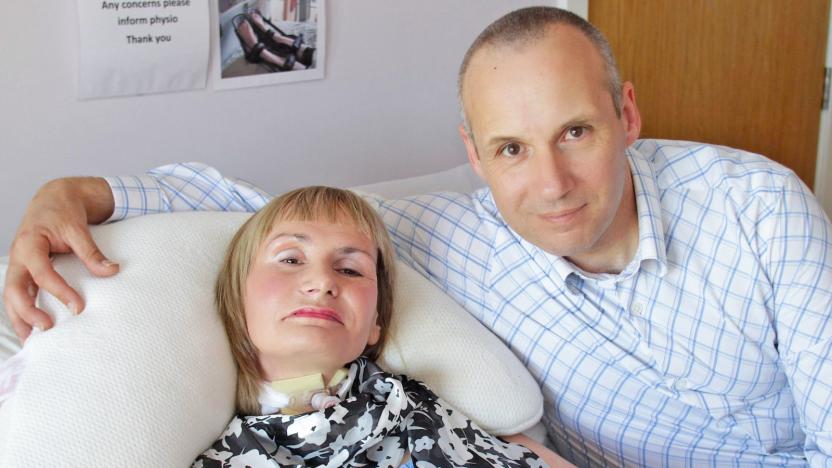
New brain-computer interface breaks through locked-in syndrome
Researchers have been using brain-computer interfaces to interact with patients suffering from locked-in syndrome for a few years now. But a new system from the Wyss Center for Bio and Neuroengineering in Switzerland may finally allow even the most immobile patients communicate with the outside world.
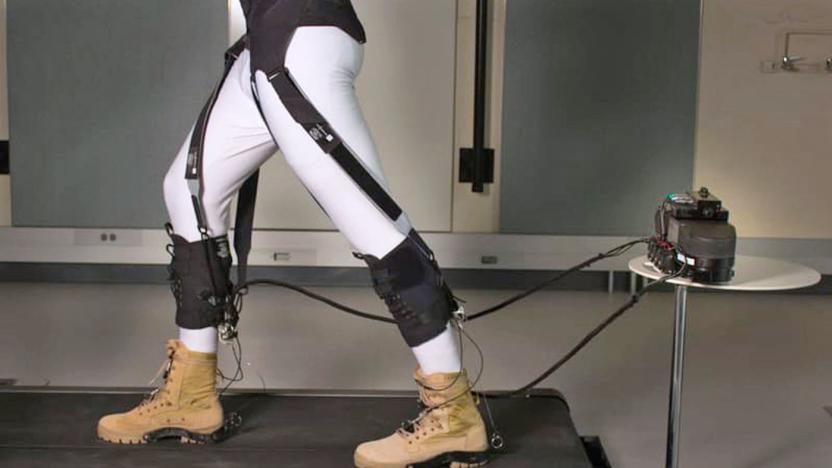
Harvard's soft exosuit makes walking 23 percent easier
Harvard Wyss Institute researchers have been working on a soft exosuit with DARPA's financial help for years. While they were able to present a proof of concept in 2016, it's only now that they've found out just how much the suit can actually help its wearer. According to a new study published in Science Robotics, Harvard's exosuit reduces the energy a user needs to exert while walking by 23 percent. It does that by providing assistive force to the ankle at the perfect moment when you take another step.
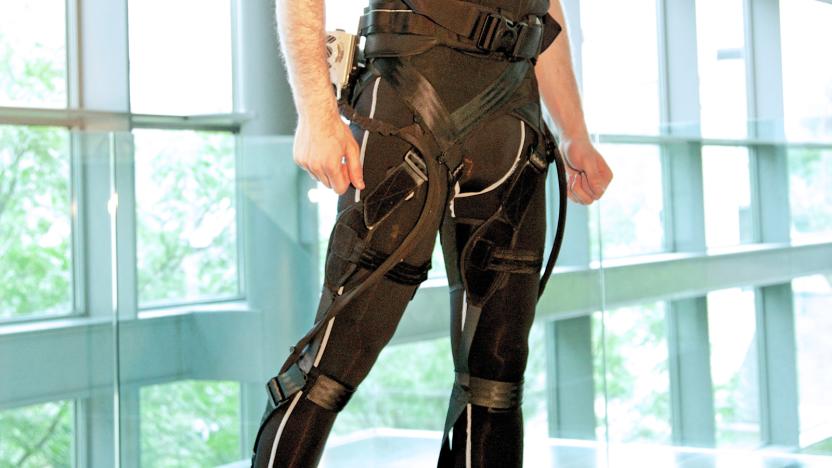
Harvard engineers designed a 'soft wearable robot'
A team of engineers from Harvard University's Wyss Institute for Biologically Inspired Engineering have moved one step closer to a consumer version of a soft, assistive exosuit that could help patients with lower limb disabilities walk again. The Wyss Institute announced today that the university is collaborating with ReWalk Robotics to bring its wearable robotic suit to market.

3D printer uses lasers to create metallic objects in midair
This Harvard-made 3D printer can create complex metallic objects other printers can't. See, instead of spitting out one layer over another, the machine was designed to ooze out metal that immediately freezes solid. That allows it to print free-form patterns that look like they're suspended in air, like coils. Created by the university's Wyss Institute for Biologically Inspired Engineering and the John A. Paulson School of Engineering and Applied Sciences (SEAS), the printer uses "ink" composed of silver nanoparticles. A focused laser then heats the material and solidifies it as it comes out.

ICYMI: Robots, disappearing medical skin and more
#fivemin-widget-blogsmith-image-336110{display:none;} .cke_show_borders #fivemin-widget-blogsmith-image-336110, #postcontentcontainer #fivemin-widget-blogsmith-image-336110{width:570px;display:block;} try{document.getElementById("fivemin-widget-blogsmith-image-336110").style.display="none";}catch(e){}Today on In Case You Missed It: We are rounding up a few interesting robot and car stories at the top of the show because simply too much happened since last week to just chose one. The University of North Texas drug-sniffing car needs a mention, and so does the US Army's new bomb bot. Also, researchers from MIT developed a gel that dries as a totally clear second skin. It could be used to do something as simple as smooth out wrinkles (see ya, botox!) or deliver topical medicine, covertly. And Harvard's Wyss Institute came up with a cheap way to test for the Zika virus; hopefully at-risk states take notice. If you like Rube Goldberg devices, this one with magnets and marbles might blow your mind. As always, please share any great tech or science videos you find by using the #ICYMI hashtag on Twitter for @mskerryd.

Harvard researchers trial cheap, efficient paper-based Zika test
Based on the paper-based sensors they made to detect viral-based pathogens like Ebola, a Wyss Institute at Harvard research team created a version that checks for Zika. This prototype method could reveal the presence of the disease in hours instead of the days or weeks it takes for blood tests, but it needs more refining before it's accurate enough to be deployed.

Medicine-covered nanoparticles could help stroke victims
Doctors have been working for years on using tiny nanoparticles covered in clot busting drugs to clear blocked vessels in stroke victims. The only problem is that when a vessel is completely blocked, a lack of blood flow in the affected area is a problem. Strokes can be treated by inserting a stent into the clot, then opening it to pull the clot out but it can cause damage to the artery or dislodge pieces of the clot that get stuck elsewhere. Scientists at Harvard and UMass have struck on a method for using a stent to burrow a small hole through the clot, then releasing the nanoparticles into it. The increased pressure in the channel activates the drugs, which attach to the clot, break it up and continue to work on busting it up even as parts break off -- check after the break for a quick video showing the process in action.

UV-light enabled catheter fixes heart defects without surgery
Advances in medicine are treating patients in ways that were never thought possible. The latest breakthrough comes from a team of scientists in Boston who have developed a way to fix holes in the heart without the need for invasive surgery. They created a ground-breaking catheter, biodegradable glue and patch that fit inside the patient's veins and are guided directly into the heart. Once there, it uses a reflective balloon and UV light to apply the patch and activate its adhesive coating.

DARPA is funding the development of a soft, fabric-based exoskeleton
When someone says "exoskeleton," it's easy to imagine a clunky contraption made of metal, like the one we typically see in the news courtesy of various research groups, or in movies like Edge of Tomorrow. The exoskeleton that Harvard's Wyss Institute is developing, though, doesn't look like it was torn off a robot: it's called the Soft Exosuit, and as its name implies, it's lightweight and made of fabric. Wyss has actually been working on the Soft Exosuit for years, but now DARPA has granted it a $2.9 million funding under its Warrior Web program to further its development. Its current iteration is really more like smart clothing that can be worn like pants, designed to mimic how leg muscles and tendons move and to support the users' joints as they walk. That's made possible thanks to the strategically placed straps around the legs that contain flexible sensors -- all controlled by a low-power microprocessor.

Harvard University's robotic insect takes its first controlled flight (video)
There's hardly a shortage of animal inspired robots, but few are as tiny as Harvard's autonomous RoboBee. The robotic insect has been around for a while, but researchers at the Wyss Institute for Biologically Inspired Engineering only recently managed a minor breakthrough: controlled flight. Using new manufacturing and design processes, the team has managed to keep the coin-sized bug aloft by independently manipulating the robot's wings with piezoelectric actuators and a delicate control system. "This is what I have been trying to do for literally the last 12 years," explains Professor Robert J Wood, Charles River Professor of Engineering and Applied Sciences. "Now that we've got this unique platform, there are dozens of tests that we're starting to do, including more aggressive control maneuvers and landing." There's more to be done, however. The tiny machine still requires a tether for power and control, and researchers are still studying nature to suss out how insects cope with flying through wind and the elements. Eventually, the team hopes to outfit the RoboBee with lightweight batteries, an internal control system and a lighter chassis. For now, however, they're just happy to learned to steer. Check out the insect in action after the break.

Harvard stores 704TB in a gram of DNA, may have us shopping for organically-grown storage (video)
Early research has had DNA making circuits and little factories. We haven't really seen DNA used as a storage medium, however, and it's evident we've been missing out. A Harvard team led by George Church, Sriram Kosuri and Yuan Gao can stuff 96 bits into a DNA strand by treating each base (A, C, G, T) as though it's a binary value. The genetic sequence is then synthesized by a microfluidic chip that matches up that sequence with its position in a relevant data set, even when all the DNA strands are out of order. The technique doesn't sound like much on its own, but the microscopic size amounts to a gigantic amount of information at a scale we can see: about 704TB of data fits into a cubic millimeter, or more than you'd get out of a few hundred hard drives. Caveats? The processing time is currently too slow for time-sensitive content, and cells with living DNA would destroy the strands too quickly to make them viable for anything more than just transfers. All the same, such density and a lifespan of eons could have us turning to DNA storage not just for personal backups, but for backing up humanity's collective knowledge. We're less ambitious -- we'd most like to know if we'll be buying organic hard drives alongside the fair trade coffee and locally-sourced fruit.

Alt-week 7.28.12: social mathematics, Pluto's moons and humans-on-a-chip
Alt-week peels back the covers on some of the more curious sci-tech stories from the last seven days. It's a beautiful world we live in. And, while the sweet and romantic part is debatable, strange and fantastic is not. Our universe is one populated by non-planetary celestial bodies with their own non-planetary satellites, high school social hierarchies based on predictable mathematical formulas and military-funded "gut-on-a-chips." It's a weird place filled with weird stories, and we just can't get enough of it. So, what has the last seven days brought us from the fringes of science and tech? Keep reading after the break to find out. This is alt-week.

Self-assembling nanodevices could advance medicine one tiny leap at a time
Seems like Harvard wasn't content with making robotic bees, and has taken its quest for miniaturization right down to the nanoscale level. One nanometer-wide, single-stranded DNA molecules are the topic of the university's latest research, which sets out a way they can be used to create "3D prestressed tensegrity structures." Should these theoretical scribblings ever pan out in the real world, we could see the resulting self-assembled nanodevices facilitating drug delivery targeted directly at the diseased cells, and even the reprogramming of human stem cells. Infusing a nanodevice with the relevant DNA data passes instructions on to your stem cells, which consequently turn into, for example, new bone tissue or neurons to augment your fleshy CPU. Yes, we're kinda freaked out, but what's cooler than being able to say you're going to the doctor for a shot of nanotransformers?









